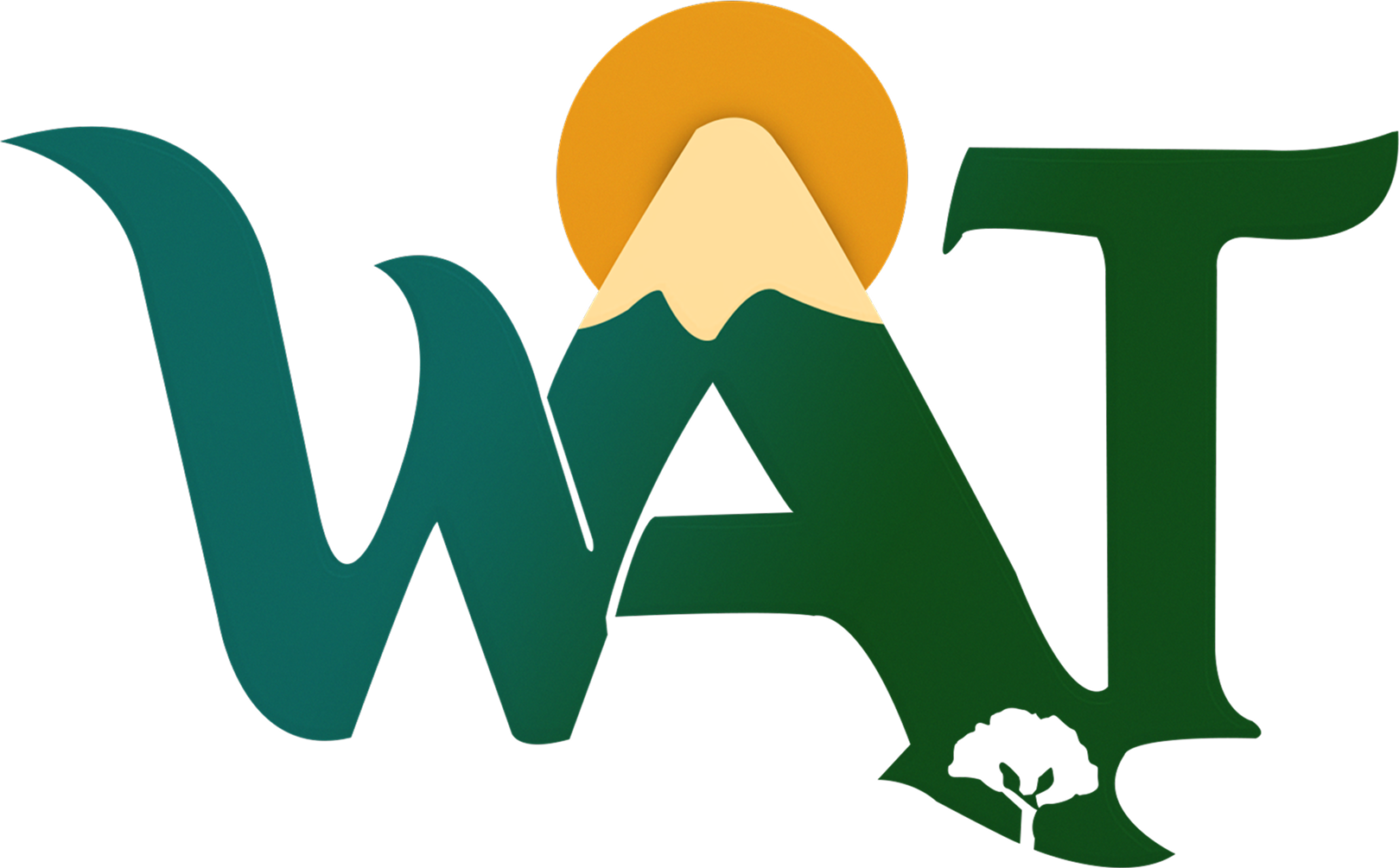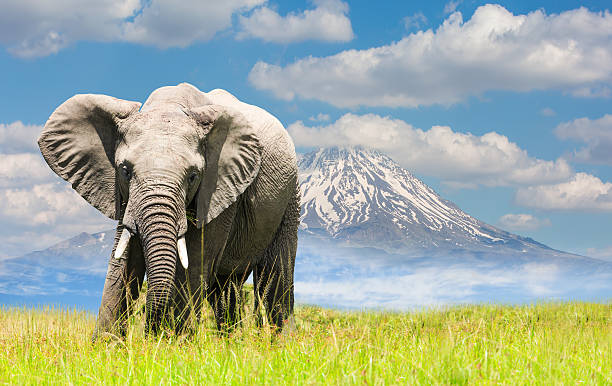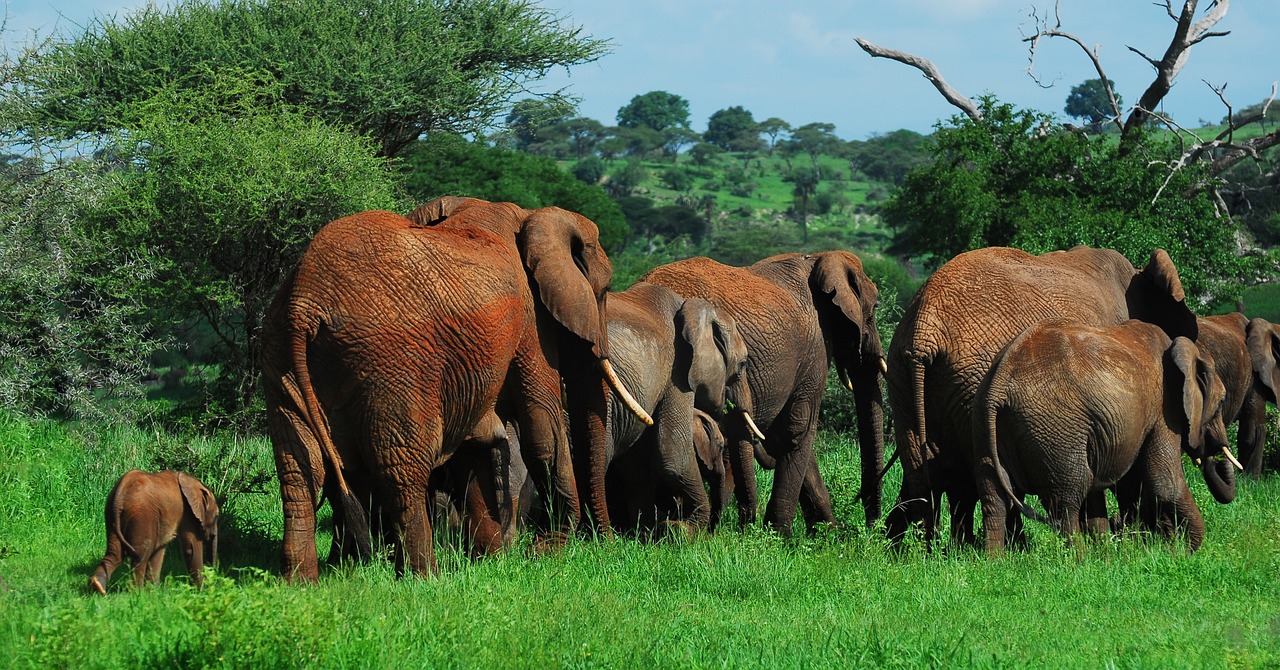The Ultimate Guide to Mount Kilimanjaro Climbs for Every Adventurer

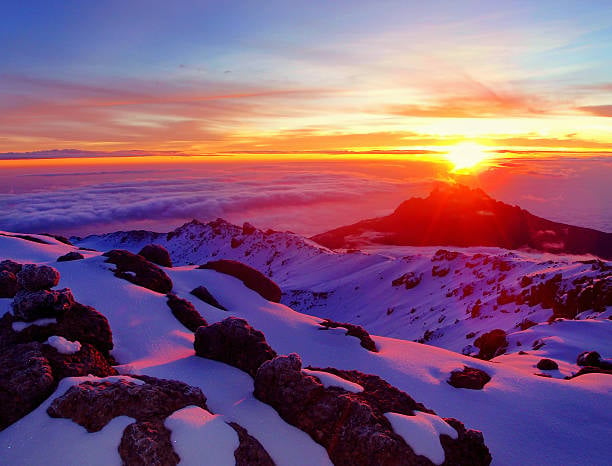
Standing as a monumental icon of East Africa, Mount Kilimanjaro is more than just a mountain; it is a symbol of adventure, perseverance, and the raw beauty of nature.
As the highest free-standing mountain in the world, its snow-capped peak rises dramatically from the surrounding savanna, beckoning climbers from every corner of the globe.
This is a place where you can walk from a tropical rainforest to an arctic-like wonderland in a matter of days.
Embarking on a journey to climb Mount Kilimanjaro is a decision to challenge yourself, to witness breathtaking landscapes, and to stand on the very roof of Africa.
It is one of the celebrated Seven Summits, yet it remains uniquely accessible. Unlike other colossal peaks, reaching its summit does not require technical mountaineering skills, but rather a strong will and a steady pace.
This guide is designed for every adventurer, from the seasoned trekker to the determined novice. We will explore the essential preparations, the diverse routes that wind their way to the summit, and the tips that will help you transform this dream into a triumphant reality.
The path to Uhuru Peak is a profound experience, and your adventure starts with the very first step of preparation.
Understanding Mount Kilimanjaro: The Roof of Africa
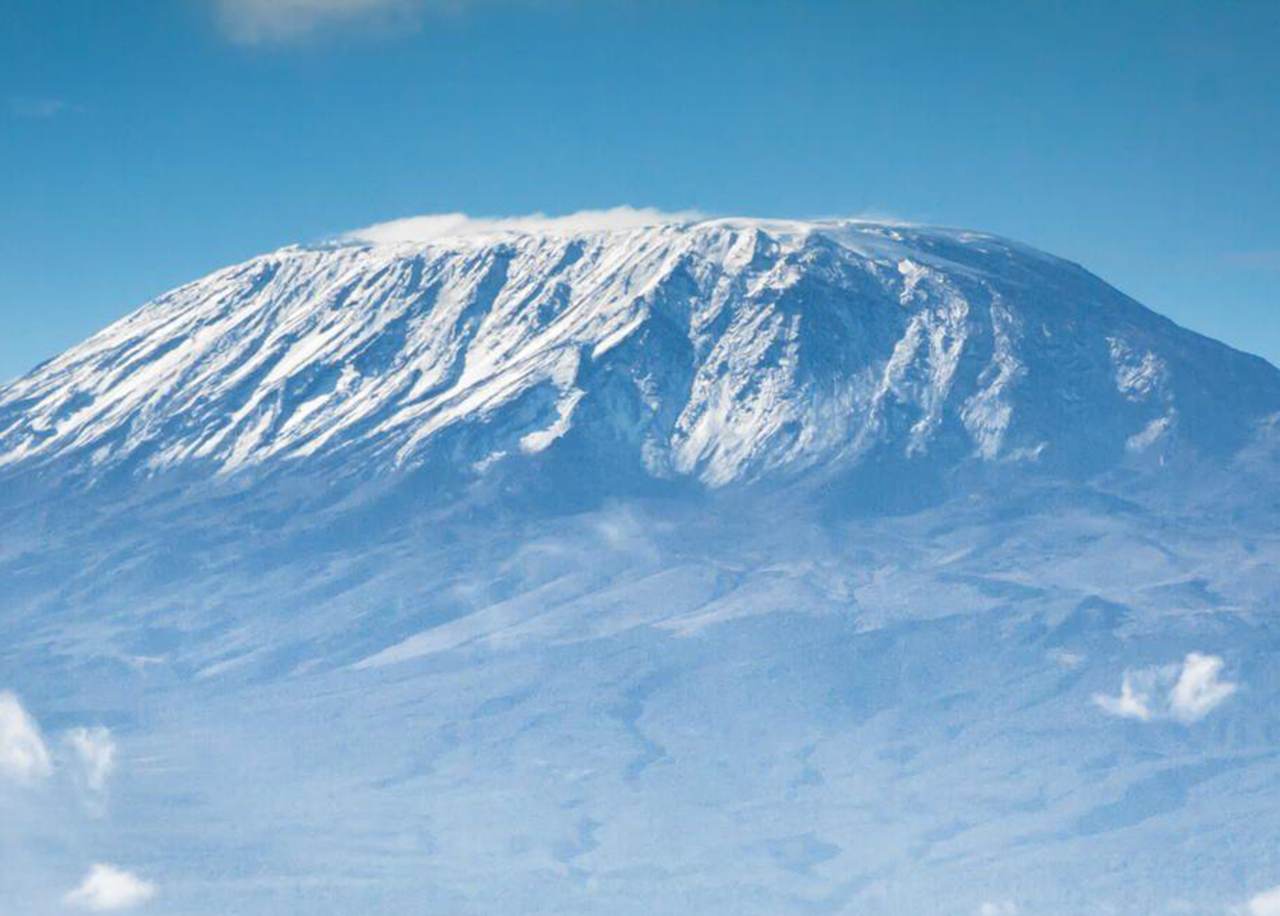
Mount Kilimanjaro is a dormant volcano, a geological masterpiece located in Tanzania.
Its immense presence dominates the landscape and has captivated humanity for centuries.
As a UNESCO World Heritage Site, Kilimanjaro National Park protects not only its unique geology but also the incredible biodiversity that flourishes on its slopes.
Climbing Kilimanjaro is a journey through a vertical world of changing ecosystems.
A Geological Marvel: Three Distinct Volcanic Cones
The mountain's colossal structure is composed of three distinct volcanic cones.
Shira, the oldest, is now an extinct and eroded caldera, forming the vast Shira Plateau.
Mawenzi, a rugged and spiky peak, stands as the third highest peak in Africa.
The youngest and tallest cone is Kibo, which is dormant but could potentially erupt again.
It is on Kibo’s crater rim that you find Uhuru Peak, the ultimate goal.
The last major eruption of Kilimanjaro was dated to 360,000 years ago, leaving behind a geological story etched in lava flows and volcanic rock.
A World Above the Clouds: Kilimanjaro's Unique Ecosystems
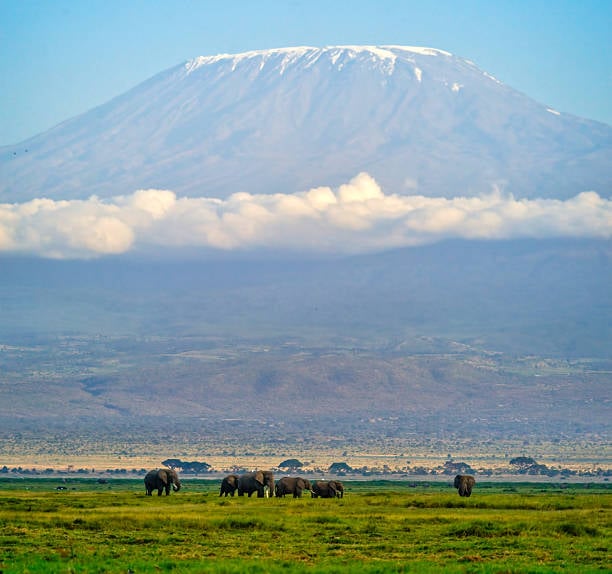
A Kilimanjaro trek is a journey through multiple, distinct climate zones.
The adventure begins in the lush, humid rain forest at the base, alive with the sounds of monkeys and exotic birds. As you ascend, the landscape transforms into a heath and moorland zone, dotted with giant heathers.
Further up, you enter the surreal alpine desert, a high-altitude environment with sparse vegetation and dramatic temperature swings.
Finally, you reach the arctic zone at the summit, a world of ice and rock under a brilliant sky.
This rapid transition through diverse ecosystems, from rainforest to arctic conditions, is one of the most remarkable aspects of climbing Kilimanjaro. The park is home to unique flora and fauna, adding to its global significance.
The Call of the Summit: Why Climb Mount Kilimanjaro?
The motivation to undertake one of the great mount kilimanjaro climbs is deeply personal.
For many, it represents the ultimate physical and mental challenge, a test of endurance and resilience.
The sense of accomplishment upon reaching the summit of Kilimanjaro is a feeling that lasts a lifetime. It is a chance to disconnect from the digital world and reconnect with nature in its purest form.
Can You Climb Mount Kilimanjaro? Assessing the Challenge
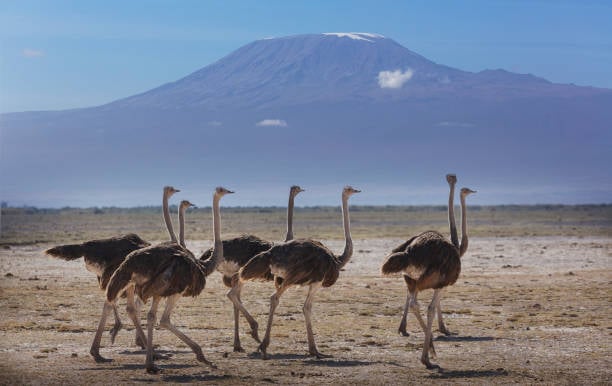
The question of difficulty is often the first one potential climbers ask. While the challenge is significant, it is often misunderstood.
The journey is more about stamina and acclimatization than technical skill, making it an attainable goal for a wide range of people.
How Difficult is the Mount Kilimanjaro Climb?
Fundamentally, climbing Kilimanjaro is a long-distance hike at progressively higher altitudes.
There is no technical climbing involved on the main routes, and no special equipment like ropes or harnesses is needed.
The primary activity is walking, often at a slow and deliberate pace. This makes the mountain accessible to anyone with a good level of physical fitness and determination.
People of all ages, from children over 10 to active seniors in their 70s and 80s, have successfully made the ascent.
Can a Beginner Climb Mount Kilimanjaro?
Yes, a beginner can absolutely climb Mount Kilimanjaro. Many people who reach the summit are first-time high-altitude trekkers.
Success depends less on prior climbing experience and more on thorough preparation.
A dedicated training regimen, the right gear, and, most importantly, choosing a suitable route and a reputable tour operator are the keys to a successful summit for any novice.
The Real Hurdle: High Altitude and Its Effects
The single greatest challenge on a Kilimanjaro climb is the high altitude. As you ascend, the air becomes thinner, meaning there is less oxygen available with every breath.
Your body needs time to adjust to this change, a process known as acclimatization.
Failure to acclimatize properly can lead to altitude sickness, which is the primary reason some climbers are unable to reach the top.
Planning Your Kilimanjaro Climb: First Essential Steps
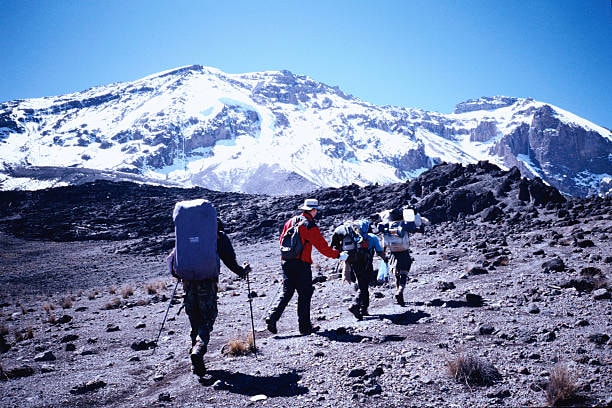
Proper planning is the foundation of a safe and successful Kilimanjaro trek.
From choosing the right season to understanding the costs involved, these initial steps will set you on the path to Uhuru Peak.
Choosing the Best Time to Go
While it is possible to climb the mountain year-round, the best times are during the two dry seasons: January to March and June to October.
These periods offer the most stable weather, with clear skies and less precipitation.
The rainy seasons, from April to May and in November and December, present greater challenges with mud, snow, and reduced visibility, though some climbers prefer the solitude of the trails during these times.
How Long Does It Take?
The recommended duration for a Kilimanjaro climb ranges from five to nine days, depending on the chosen route.
While shorter treks are available, they are generally not advised.
Longer treks allow for better acclimatization, which significantly increases your chances of avoiding altitude sickness and reaching the summit.
Your summit success is directly linked to giving your body enough time to adjust.
Finding a Reputable Kilimanjaro Tour Operator
Since 1991, park regulations have mandated that all climbers must be accompanied by a registered and licensed guide.
This makes your choice of a Kilimanjaro tour operator one of the most critical decisions you will make.
Look for established trekking companies with a strong safety record, positive client reviews, and a commitment to ethical porter treatment.
A good operator provides experienced guides, quality equipment, and nutritious food, all of which are vital for a successful climb.
Understanding the Costs: Park Fees and More
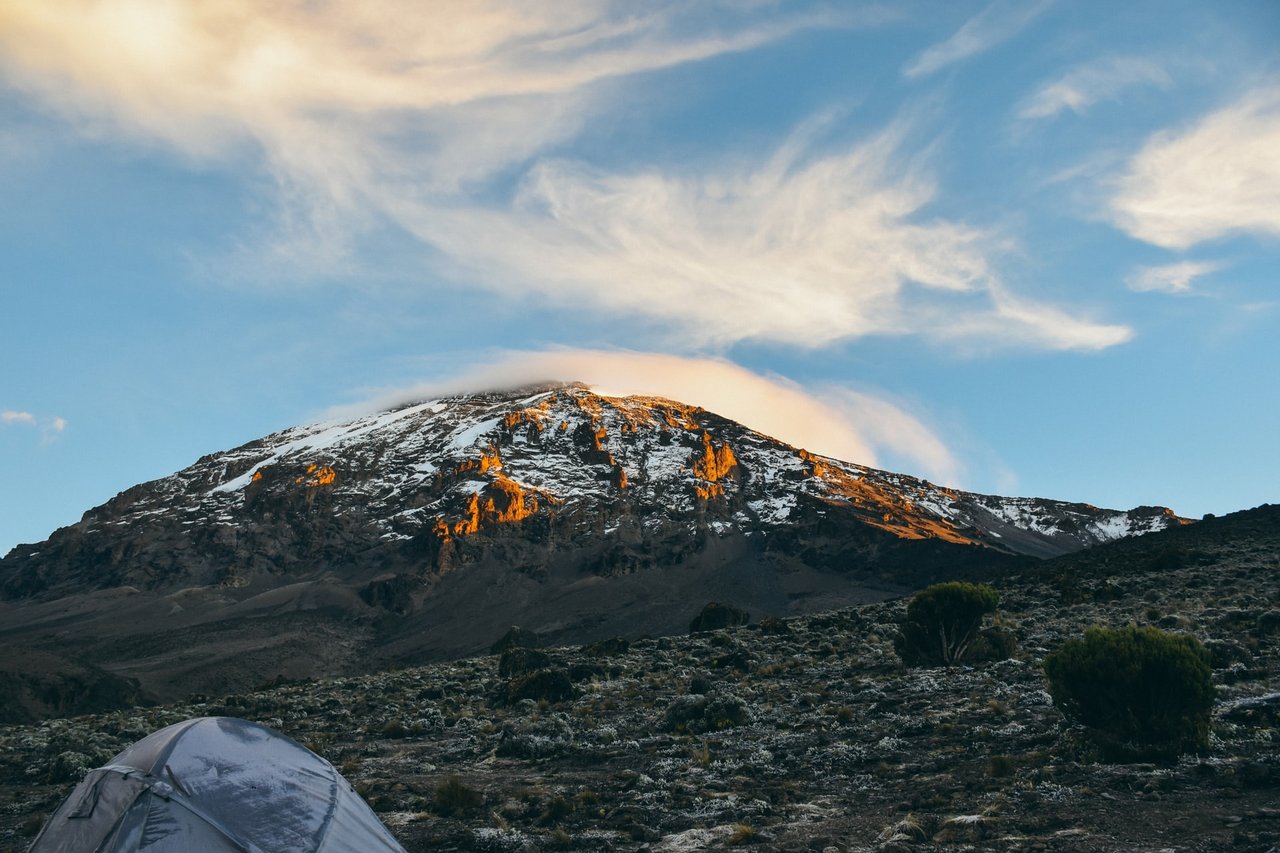
The cost of climbing Kilimanjaro can vary significantly, but it is essential to understand what is included.
A major portion of the fee goes towards mandatory national park fees, which cover conservation, camping or hut access, and rescue services.
These park fees are charged on a per-person, per-day basis. Other costs include staff wages for your guides and porters, food, transportation, and equipment.
Be wary of unusually cheap offers, as they may indicate compromised safety standards or unethical treatment of staff.
A Deep Dive into Kilimanjaro Routes
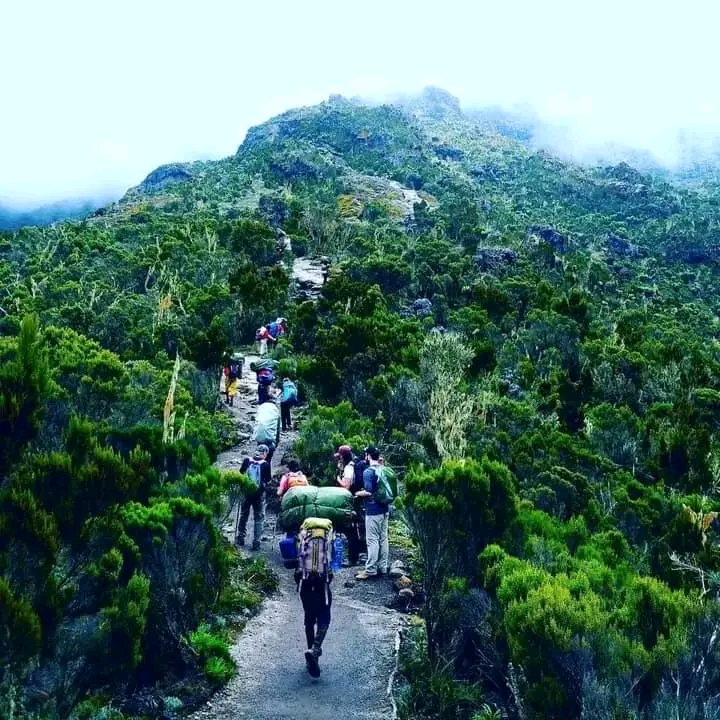
There are six official paths that lead up the slopes of Mount Kilimanjaro to the summit.
Each of the Kilimanjaro routes offers a different experience in terms of scenery, difficulty, traffic, and success rates. Choosing the right one is crucial for your enjoyment and success.
How to Choose the Right Route for You
Your choice should be based on several factors.
Consider the number of days you have, your fitness level, your budget, and whether you prefer solitude or a more social trek.
Longer routes, while more expensive, provide better acclimatization and have higher success rates. All the routes converge for the final ascent to the summit.
The Machame Route ("Whiskey Route")
The Machame route is one of the most popular and scenic routes on the mountain. It is known for its beautiful vistas and diverse landscapes. Though it is a challenging trek with many ups and downs, it offers an excellent acclimatization profile, leading to high success rates. This route is recommended for those with some hiking experience and a good level of fitness. It is a camping route, meaning you will sleep in tents each night.
The Lemosho Route: Scenic and Successful
The Lemosho route is often considered the most beautiful of all the routes, beginning in a remote rainforest on the western side of the mountain. It offers a superb acclimatization schedule, especially on the longer 8-day itinerary, which contributes to its very high summit success rate. The initial days are less crowded before it merges with the Machame route. This is an excellent choice for those who prioritize scenery and a high chance of success.
The Marangu Route ("Coca-Cola Route")
The Marangu route is the oldest and most established route. It is often considered the easiest path up Kilimanjaro, following a more gradual, direct path.
Its main distinction is that it offers dormitory-style accommodations in huts, which can be a welcome comfort for those who prefer not to camp.
However, its shorter itinerary and steady ascent provide poor acclimatization, resulting in one of the lowest success rates.
A Closer Look at Marangu Route Huts
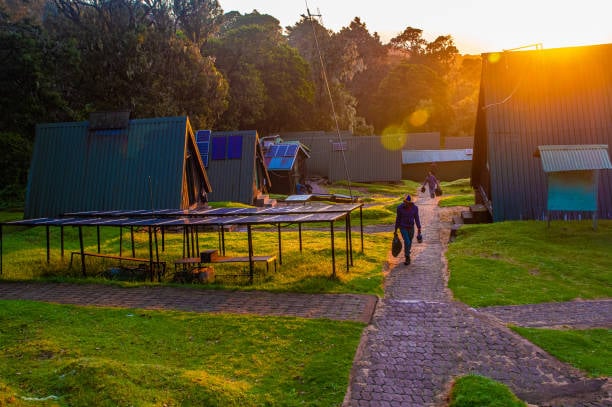
The A-frame huts on the Marangu route provide basic shelter with bunk beds and communal dining areas.
While they protect you from the elements, they can be crowded and noisy.
Booking this route well in advance is essential, especially during peak season, as the hut capacity is limited.
The Northern Circuit: The Longest and Newest Path
For those with more time, the Northern Circuit is the ultimate option.
As the longest route, typically taking 8-9 days, it offers unparalleled acclimatization and the highest success rates.
It starts along the Lemosho route before traversing the quiet, rarely visited northern slopes of the mountain.
This path provides stunning, 360-degree views and a true wilderness experience away from the crowds.
The Rongai Route: A Unique Northern Approach
The Rongai route is the only one that approaches Kilimanjaro from the north, near the Kenyan border.
It is known for being one of the quieter trails and offers a more gradual ascent, making it a good option for those with less backpacking experience.
It also tends to have less rainfall than the southern routes, making it a solid choice during the wetter parts of the year. The views are spectacular and different from the more popular trails.
Advanced Options: Umbwe and Shira Routes
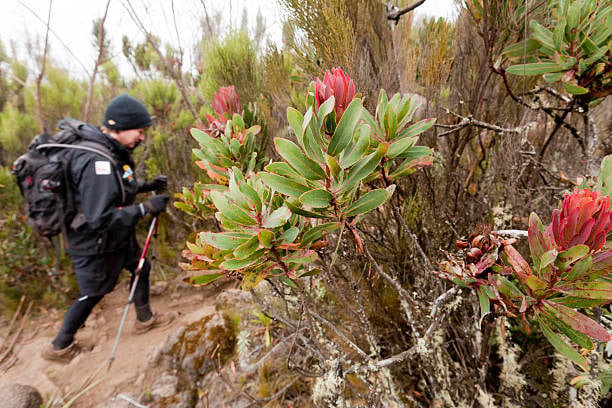
The Umbwe route is the shortest, steepest, and most difficult route up Kilimanjaro and is only recommended for experienced, well-acclimatized trekkers.
The Shira route begins at a higher altitude and links up with the Machame route on the third day of the trek, offering access to the beautiful Shira Plateau.
Conquering Altitude Sickness: Your Key to the Summit
No amount of physical fitness can guarantee immunity from altitude sickness.
Understanding its symptoms and actively working to prevent it is the most important aspect of a successful Kilimanjaro climb.
What is Altitude Sickness?
Altitude sickness, or Acute Mountain Sickness (AMS), occurs when your body cannot get enough oxygen from the air at high altitude.
Symptoms often resemble a bad hangover and can include headache, nausea, fatigue, dizziness, and loss of appetite.
It is crucial to communicate any symptoms to your guide immediately, as ignoring them can lead to more severe and life-threatening conditions.
The Golden Rules of Acclimatization
The best way to prevent altitude sickness is to allow your body time to adapt. A slow, steady ascent is paramount. This is why choosing a longer route is so beneficial.
The principle of "climb high, sleep low," practiced on routes like Machame and Lemosho where you ascend to a higher point during the day before descending to a lower altitude for the night, is an extremely effective acclimatization strategy.
Acclimatization days, where you spend an extra night at the same elevation, are also crucial.
Hydration and Diet at High Altitude
Staying hydrated is vital. You should aim to drink at least three to four liters of water per day.
A diet high in carbohydrates is also recommended, as it helps your body use oxygen more efficiently.
Your appetite may decrease as you go higher, but it is important to continue eating to fuel your body for the trek ahead.
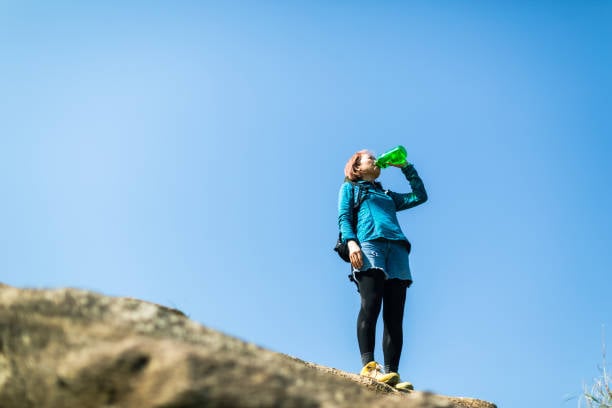
Training and Preparation for Your Kilimanjaro Trek
Your journey to the summit begins months before you set foot in Tanzania.
A dedicated training program will prepare your body and mind for the rigors of the climb, making the experience more enjoyable and increasing your summit success.
Building Your Physical Fitness
Since climbing Kilimanjaro is primarily a hiking route, your training should focus on this activity.
The best preparation is to go on long hikes, ideally on varied terrain with hills.
Practice hiking with a weighted backpack (around 20 lbs / 10 kg) to simulate the daypack you will carry on the mountain.
A structured training program that includes both anaerobic and aerobic exercises is recommended for at least 12 weeks before your trek. Focus on building cardiovascular endurance and leg strength.
The Mental Game: Preparing for the Challenge
Mental fortitude is just as important as physical fitness. Many climbers who turn back do so because of the mental strain, not physical exhaustion.
Prepare yourself for long days of walking, basic camping conditions, and the potential discomforts of altitude.
A positive attitude and the ability to stay motivated when you are tired and cold can make all the difference. Getting adequate rest and managing stress are key components of your preparation.
Essential Gear: Packing for Five Climate Zones
Packing correctly is essential. You will need layers of clothing that you can add or remove as the temperature changes.
Key items include waterproof outer layers, insulated jackets, thermal underwear, a warm hat, gloves, and sunglasses.
Broken-in, waterproof hiking boots are your most important piece of gear. You will also need good quality sleeping bags and trekking poles, which can significantly reduce the strain on your knees during the descent.
Life on the Mountain: A Day-by-Day Glimpse
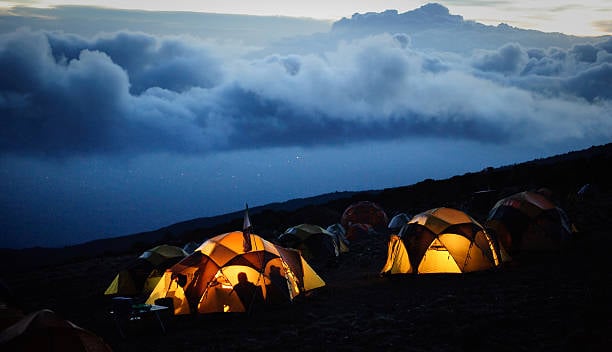
Life on Kilimanjaro settles into a simple, rewarding rhythm. Each day is focused on the journey, surrounded by stunning scenery and supported by a dedicated team.
Your Support Crew: Guides, Porters, and Cooks
Your mountain crew is the heart and soul of your Kilimanjaro climb.
Your guides are highly trained professionals responsible for your safety and well-being.
Porters carry the majority of your gear, tents, and food, making the trek possible.
Cooks prepare surprisingly delicious and hearty meals to keep you energized. Their hard work and encouragement are invaluable.
A Typical Day Spent Walking
Days typically start with an early wake-up call and a hot breakfast in the dining tent. You will then begin your walk for the day, usually lasting between four and seven hours.
The pace is deliberately slow ("pole pole" in Swahili) to aid acclimatization.
You will carry only a small daypack with essentials, while the porters go ahead to set up the next camp. You will arrive at camp in the afternoon with your tent already pitched and snacks waiting.
Key Landmarks on the Trail
Depending on your route, you will encounter several famous landmarks.
The vast Shira Plateau offers incredible panoramic views. The imposing Lava Tower, a 300-foot volcanic rock formation, serves as an important acclimatization challenge.
The Barranco Wall is a thrilling scramble that looks more intimidating than it is, and
Barranco Camp is often cited as the most beautiful campsite on the mountain.
The Climax of Your Climb: Summit Night and Descent
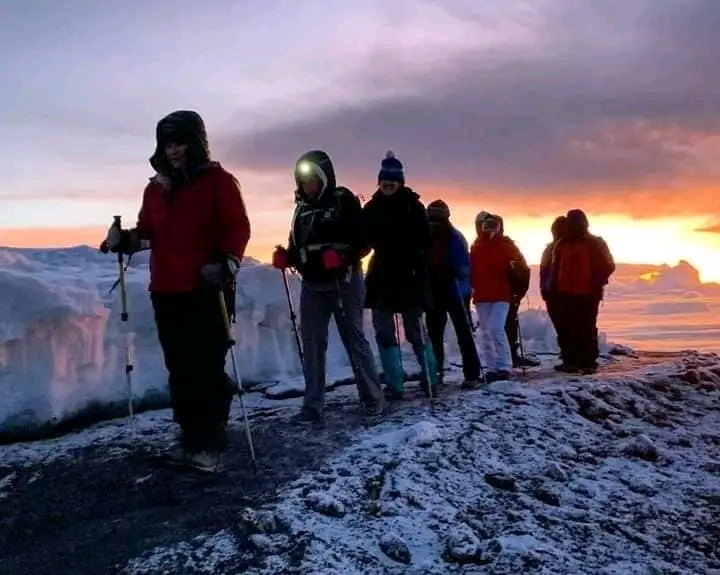
The final ascent is the most demanding and memorable part of your entire Kilimanjaro trek. It is a true test of your physical and mental limits, culminating in an unforgettable reward.
The Final Push: What to Expect on Summit Night
Your summit attempt begins in the early hours of the morning, usually around midnight.
You will dress in all your warmest layers and begin the slow, steep ascent under a canopy of stars. This is the most challenging part of the climb, both physically and mentally.
The air is thin, and the summit temperatures can be well below freezing. Your guides will lead the way, offering encouragement and ensuring your safety throughout the summit night.
Reaching Uhuru Peak: The Roof of Africa

After about six to eight hours of steady ascent, you will reach the crater rim, likely at a point called Stella Point, just as the sun begins to rise.
The view is otherworldly, with the sun casting a warm glow over the African plains below and the glaciers of the crater rim sparkling in the morning light.
From here, it is another hour or so of hiking along the crater rim to reach the true summit, Uhuru Peak (5,895 meters). Standing at the highest point in Africa is an emotional and exhilarating experience.
The Journey Down: How to Descend Kilimanjaro Safely
The celebration at the top is brief due to the high altitude. The descent is long and can be tough on tired legs.
You will retrace your steps back to your high camp, have a short rest, and then continue down to a much lower elevation to spend the night.
The following day involves a final walk through the rain forest to the park gate, where you will receive your official summit certificate and say goodbye to your mountain crew.
Beyond the Mountain: Extending Your African Adventure
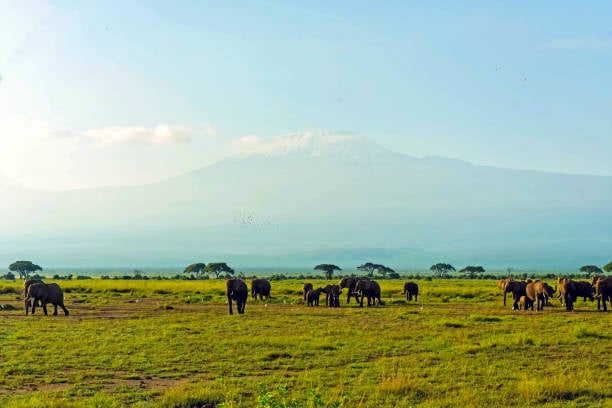
Climbing Mount Kilimanjaro is often just the beginning of a larger East African journey.
Tanzania offers some of the most spectacular wildlife viewing in the world, providing the perfect way to relax and celebrate your achievement.
Celebrating Your Success
After days on the mountain, a hot shower, a comfortable bed, and a celebratory meal are well-deserved rewards.
Take time to reflect on your incredible accomplishment before embarking on your next adventure.
Safari Opportunities: Serengeti, Ngorongoro Crater, and More
Many climbers extend their trip with a wildlife safari.
The world-famous Serengeti National Park and the stunning Ngorongoro Crater are easily accessible from the Kilimanjaro region.
These safari parks offer the chance to see the "Big Five" (lion, leopard, elephant, rhino, and buffalo) and witness the Great Migration, one of nature's most spectacular events.
This is the perfect complement to your African adventure.
Kilimanjaro Climb FAQs
What is the fatality rate of Kilimanjaro?
While any high-altitude trek carries inherent risks, the fatality rate on Kilimanjaro is very low. Reputable operators prioritize safety with daily health checks and emergency oxygen. Most incidents are preventable and related to complications from severe altitude sickness.
Can an average person climb Mount Kilimanjaro?
Yes. An average person who is in good health and willing to train for the trek has a very good chance of reaching the summit. The key is preparation, choosing a longer route for acclimatization, and listening to your guide.
What is the key to a successful summit?
The formula for a successful summit is simple: prepare your body physically, choose a route of seven days or more to allow for proper acclimatization, go at a slow and steady pace, stay hydrated, and maintain a positive mental attitude.
Conclusion: Your Adventure Awaits
Climbing Mount Kilimanjaro is an achievable dream for anyone with a spirit of adventure. It is a journey that will push your limits, reward you with breathtaking beauty, and leave you with a profound sense of accomplishment. From the first step of training to the final, triumphant moment on Uhuru Peak, the experience is one that will stay with you forever. The highest mountain in Africa is waiting.
